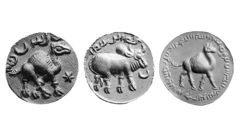

 Anthropozoologica
55 (5) - Pages 73-93
Anthropozoologica
55 (5) - Pages 73-93Human-animal relationships are notably characterized by a recurring desire of the former to organize the diversity and plurality of the latter within more-or-less strictly-defined categories. Although extensively studied by anthropologists in the 1960s and 1970s, such zoological categories have attracted much less attention in historical studies. The goal of the international workshop held in the Sorbonne on March 21st-23rd, 2019 was to shed light on classificatory practices in several past societies, focusing less on the results (establishing the taxonomy of one given chrono-cultural area) and rather on the sources and methods. Besides introducing the contributions in this volume, in a comparativist perspective and according to the epistemological issues they tackle, this first paper is both a historiographic and theoretical introduction, calling to mind the references, debates and advances of ethnobiology, structural linguistics, cognitive psychology and history of sciences, as well as an account of the final roundtable on the question of which sources the historian may exploit in order to reconstruct and discuss zoological categories in a past society. This introduction aims at summarizing the available evidence, divided into “lexicalized” and “discursive”; indirect lexical; and non-lexical (e.g. iconographic, zooarchaeological) clues, as well as evoking their differences in use and interpretation.
A corrigendum has been added to this article.
Anthropological history, epistemology, zoological categories, taxonomy, ethnobiology, linguistics, cognitive psychology.